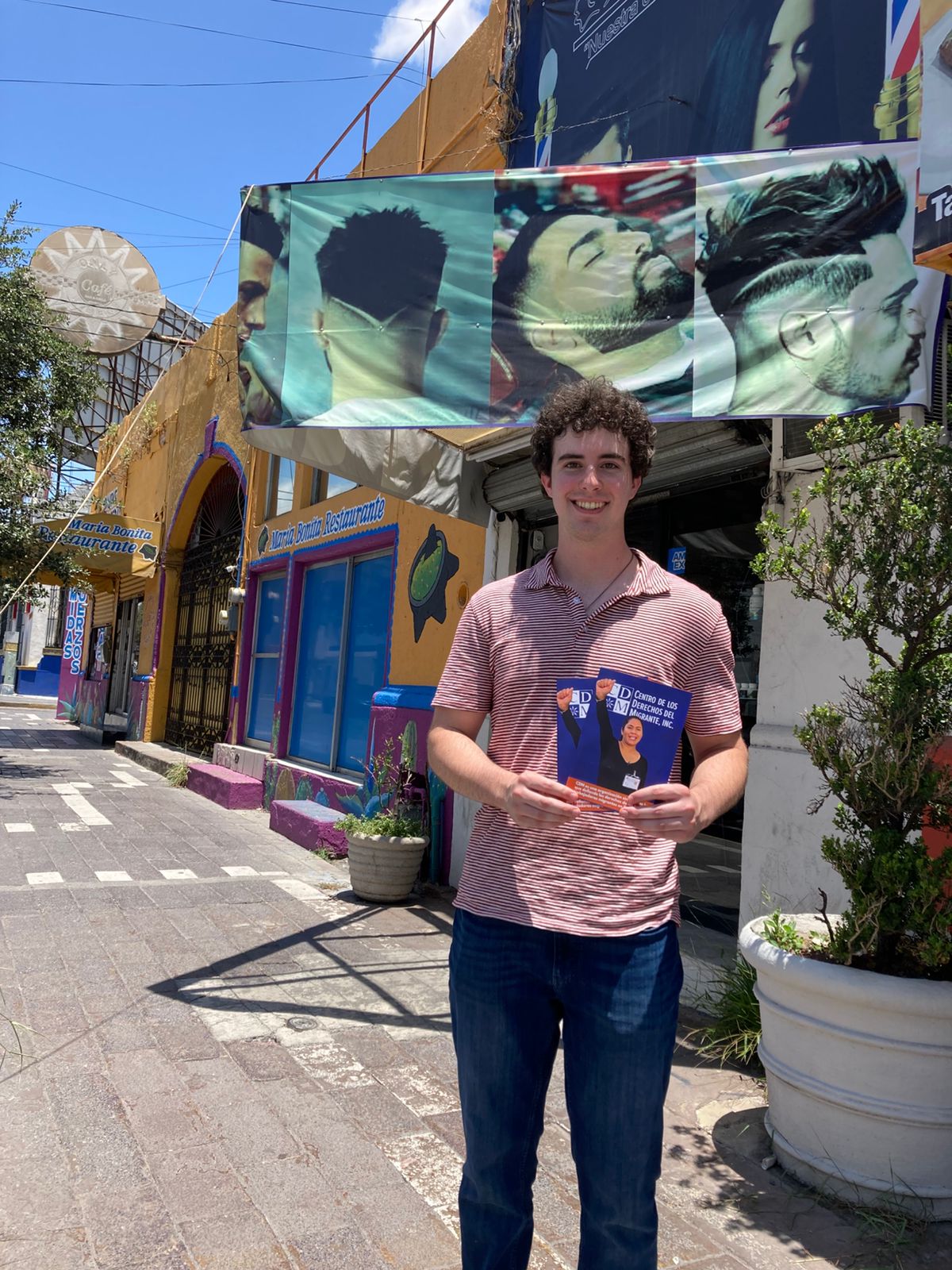Week 3: Migrant Work and the Privatization of Immigration
This week, I answered phone lines, followed-up on my ongoing intakes, and continued helping out with small tasks related to CDM's ongoing litigation before leaving for an outreach trip to northern Mexico on Thursday. CDM places a lot of emphasis on its frequent outreach work especially in Mexico where workers often feel safer to speak about the real conditions that they face in the United States. I was extremely grateful for the opportunity to go on one of these trips to meet workers in-person and be able to talk to them for longer amounts of time. Additionally, this trip to Monterrey allowed me to see and better understand the process of receiving an H-2 visa to work in the U.S. and the last steps of the process before workers begin their jobs.
The U.S. consulate in Monterrey approves the majority of H-2 visas, at times more thousands a week. Given the operational scale of the consulate and the geographical proximity to Texas, Monterrey is widely understood to be the last stop for migrant workers before they enter the United States. During peak months, thousands of workers travel to Monterrey to wait for their documents to be approved and meet up with their recruiters to begin their jobs. Each person often only gets a minute or two to speak with an official at the consulate and must have all of their documents prepared or else their visa can be rejected. Even though the process is so rapid, the consulate almost always requires workers to wait a full day in Monterrey for the final approval and a second appointment required for their visa. As a result, the downtown area of Monterrey around the U.S. immigration office is dominated by hotels, restaurants, and other businesses designed to exploit prospective H-2 workers. For example, my coworker and I spoke with many workers who said that they had to pay a fee just to enter a hotel lobby to ask if there were any rooms available. Additionally, the hotels regularly charge full prices to workers and then put upwards of six people in a room with only one or two beds. As a result, many people sleep in the parking lots outside of the hotels for the night that they have to spend in Monterrey.
When my coworker and I landed at the airport in Monterrey, the first question that the taxi driver asked us was "are you here for visas?" We spent the first afternoon walking around the city with my coworker showing me where the two consulate offices were and how the process works. Early the next morning, we left the hotel at 5:30am and walked over to the consulate. By 6am, there was a line of roughly five-hundred people waiting for to enter the building. Even in the early hours, the sun was extreme and we began talking to people where they waited in whatever shady spots there were around the building. Over the course of about seven hours, we spoke with close to three-hundred people and gave out even more informative pamphlets including to the restaurants and convenience stores in the area.

Please sign in
If you are a registered user on Laidlaw Scholars Network, please sign in